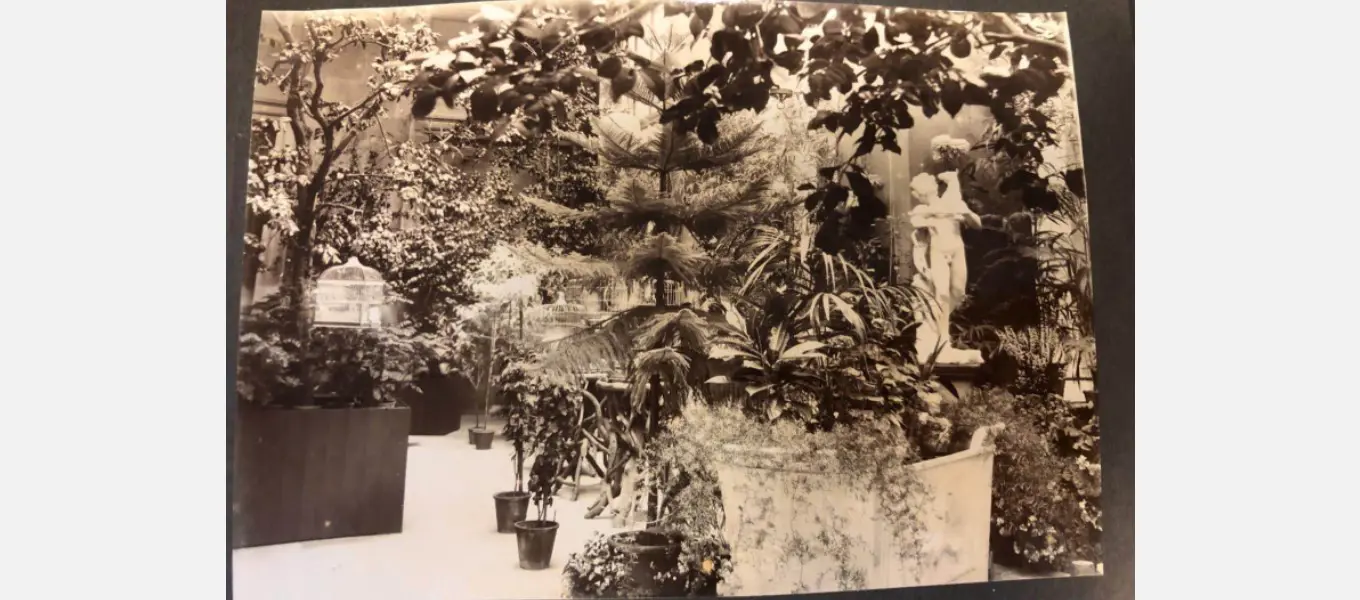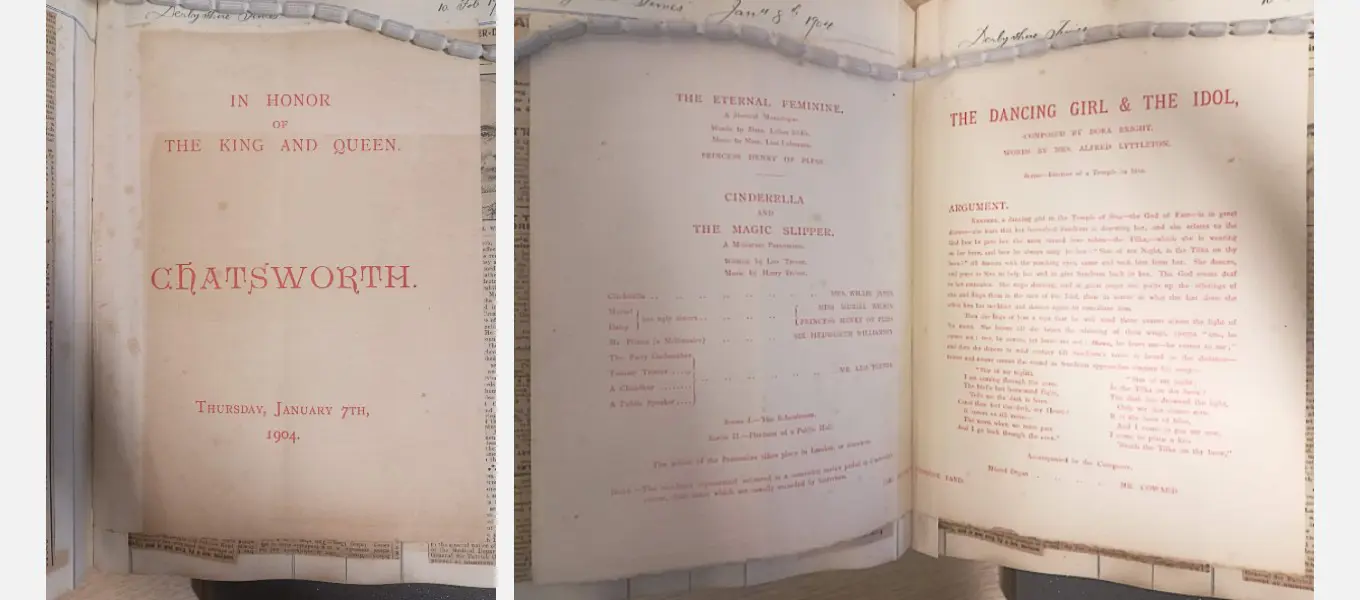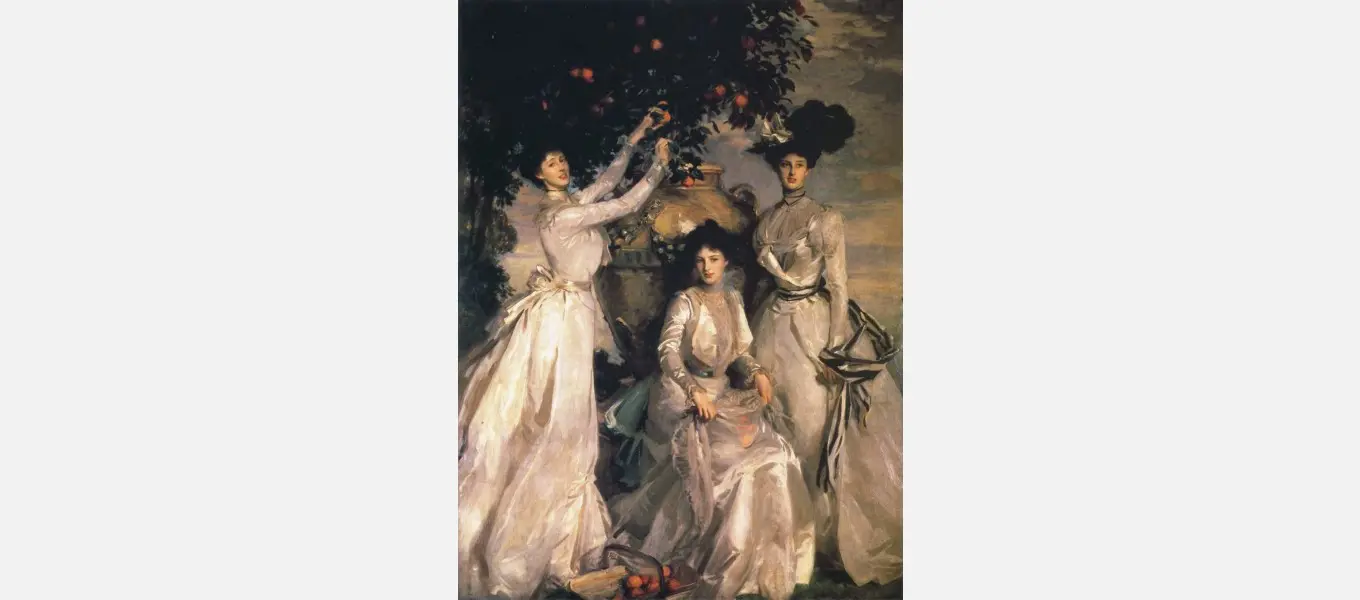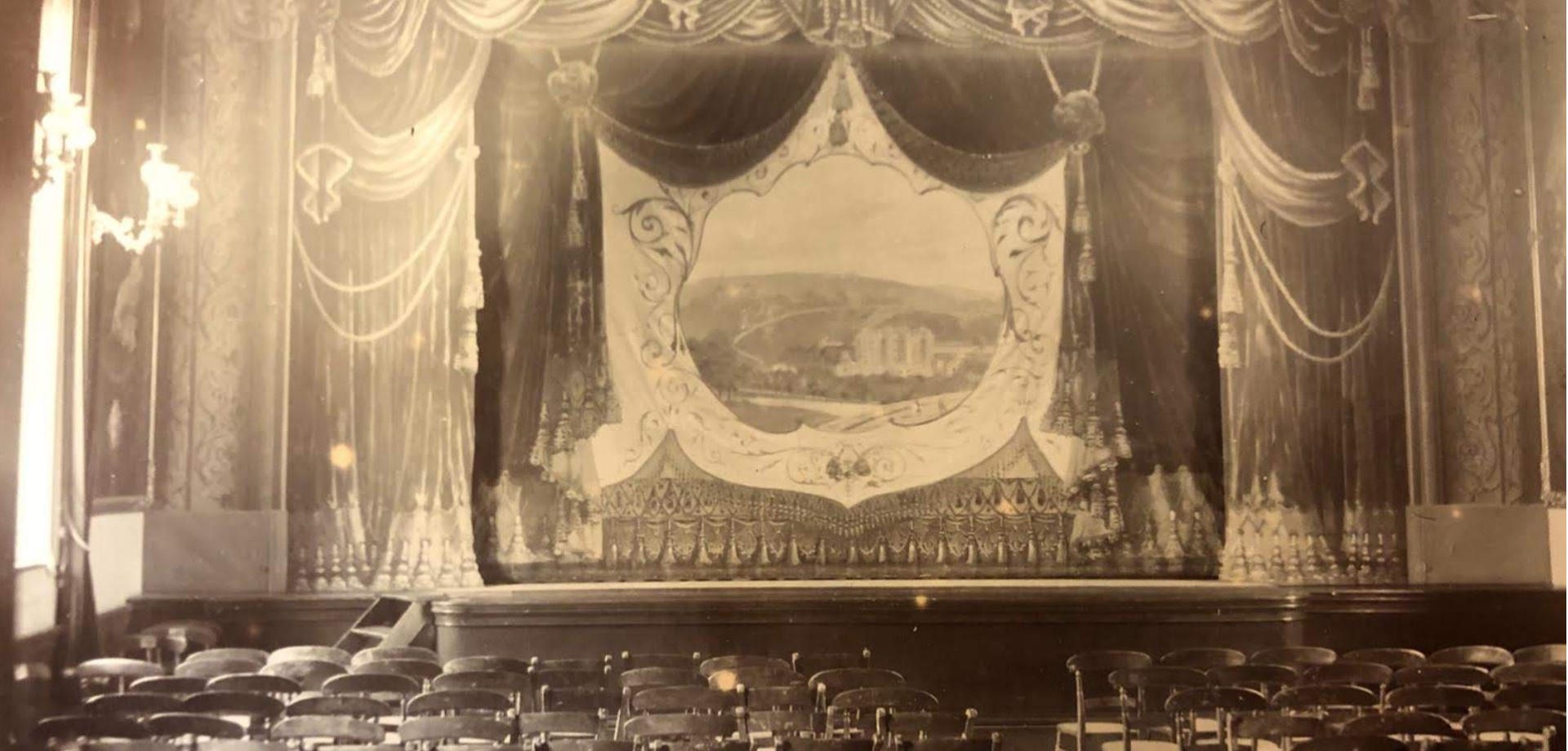We use platforms such as YouTube and Vimeo to display videos. These require the use of cookies, for which we need your consent. To watch this video, please click here to allow cookies.
Prefer to listen? Play the film to hear author Louise Calf read this blog aloud.
There’s a theatre in Chatsworth House. Did you know? Tucked away at the end of the long North Wing, beyond the gift shop and beneath the Belvedere tower, few visitors are aware of its existence; as you look up from the garden or car park, it’s impossible to tell what’s through those windows. And yet, if you were standing in the glass-roofed gift shop one evening in early January 115 years ago, you would be on your way to experiencing a night of theatrical entertainment in the company of King Edward VII. Of course, 115 years ago this gift shop was the Orangery - filled with gigantic palms, coloured lights filtering through the foliage, and parrots and parakeets in gilded cages. From here, you would pass through those double doors ahead of you and wind up three flights of stairs, before coming to what the newspapers playfully called Chatsworth’s ‘Theatre Royal’.

Over the next two to three years, as a doctoral researcher with both Chatsworth and the University of York, I will have the pleasure and privilege of exploring Chatsworth’s Theatre, uncovering some of its myriad stories and sharing them with you. The bulk of this research will be undertaken in the Devonshire Collection Archives where, to date, I have mainly focussed on a collection called the Grafton Papers. While this collection principally consists of newspaper cuttings relating to the Cavendish family, excitingly a few of the scrapbooks and postcard albums include original theatre programmes from the period described above, as well as photographs of the Theatre which, while undated, we can assume to be from early in the twentieth-century.
While it may seem a little odd to become attached to a calendar year, 1904 is the current highlight of my research. Despite having already witnessed Chatsworth’s theatricals as Prince and Princess of Wales, this was the first year that Edward and Alexandra visited as King and Queen - an anticipated trip in 1903 being postponed due to the King’s illness. It was an auspicious occasion, and semi-professional playwright, Mr. Leo Trevor had something good up his sleeve for the theatrical entertainment; he had conceived a short and acutely relevant version of a classic pantomime, and titled it, ‘Cinderella and the Magic Slipper’. However, understanding the appetite of the press for gossip, and keen that his new production remain a surprise, Mr. Trevor instead announced that his new pantomime, freshly written for the King and Queen, Duke and Duchess of Devonshire and many esteemed, aristocratic guests from across the country – to be premiered at Chatsworth’s Theatre Royal – was to be called ‘The Fat Boy of Peckham.’

We know from the accounts books that a specially-made stage prop of a comical motor car was commissioned for the event and brought up from London by train, the car being described by the Sheffield Independent at the time as a ‘wonderful property machine’. This was to be used as part of a skit playing on the unreliability of the motor car - a fact all too familiar to the King who, on a visit to the Marquess of Londonderry six months earlier, had had to wait in the ‘torrential rain and failing light’ for ‘a posse of police and locals’ to push their ailing car to the top of a steep hill before it could be started again (Tinniswood, A., The House Party, London: Faber & Faber, 2019). Referring to Mr. Trevor’s playful nod to this event, The Sketch reported that, ‘His Majesty the King was greatly amused by the eccentric behaviour of the car’.

Another delightful moment from this evening of royal entertainment (which, by the way, ended at 1.15am, followed by a buffet dinner) is not listed on the programme. A report from the Derbyshire Times informs us of the inclusion of two tableaux - a theatrical device where a group of motionless figures represent a story or scene from history. If you’re not familiar with the interior of Chatsworth House, you may not know John Singer Sargent’s group portrait of the Acheson sisters (illustrated below) - a painting that was exhibited at the Royal Academy in 1902 before returning to Chatsworth. The painting depicts the Ladies Alexandra, Mary and Theodosia Acheson in sumptuous white dresses, gathered around an urn, one of the women reaching for an orange from the tree behind them while a basket of freshly picked oranges rests at the feet of another. The sisters were Duchess Louise’s granddaughters from her first marriage and very often present at the new year theatricals. On this occasion, we are offered a teasing glimpse into the girls’ own irreverent attitude towards their recent portrait as the sisters feature in one of the tableau. The Derbyshire Times describes the scene: ‘the Ladies Acheson pose in what is entitled "Sargent's 'Preserves'," the ladies being grouped around an easel upon which is a picture of a jar of marmalade made by a well-known firm.'

Prior to the lockdown as a result of the covid-19 pandemic, I had spent just three months in the archives at Chatsworth and the stories introduced here - all from the same evening of entertainment - were pieced together over perhaps three days. This should give some indication as to the potential wealth of stories Chatsworth’s Theatre has to offer. I very much look forward to discovering more and to sharing them with you as I do so.






